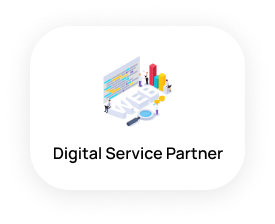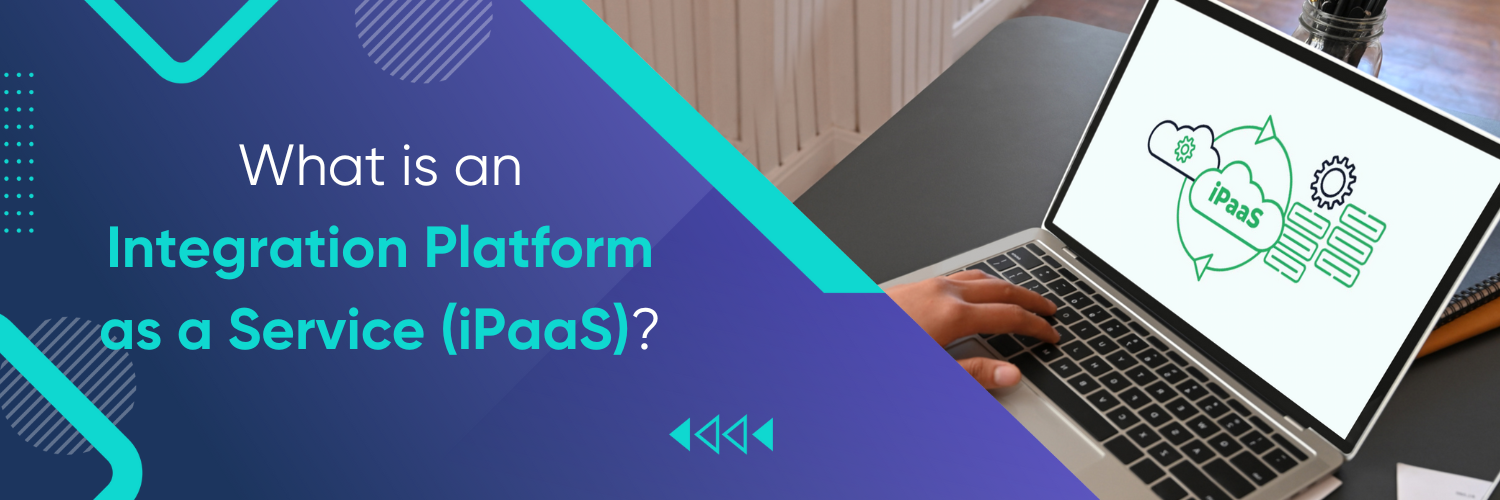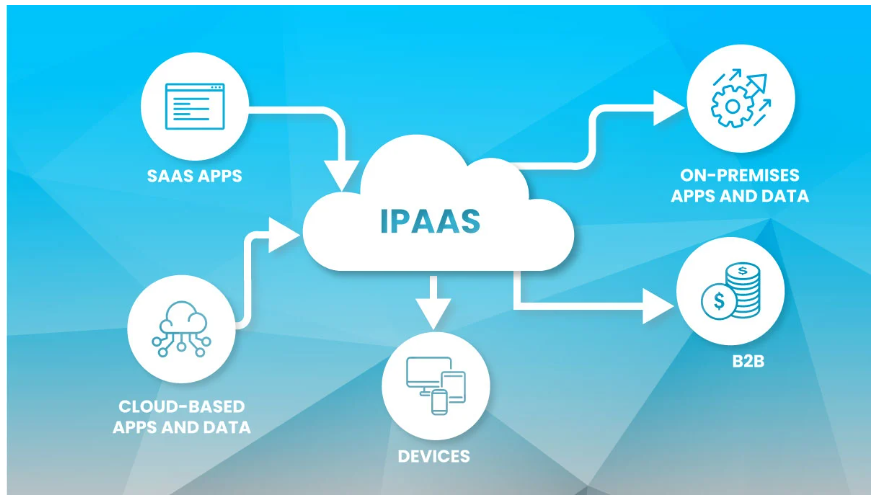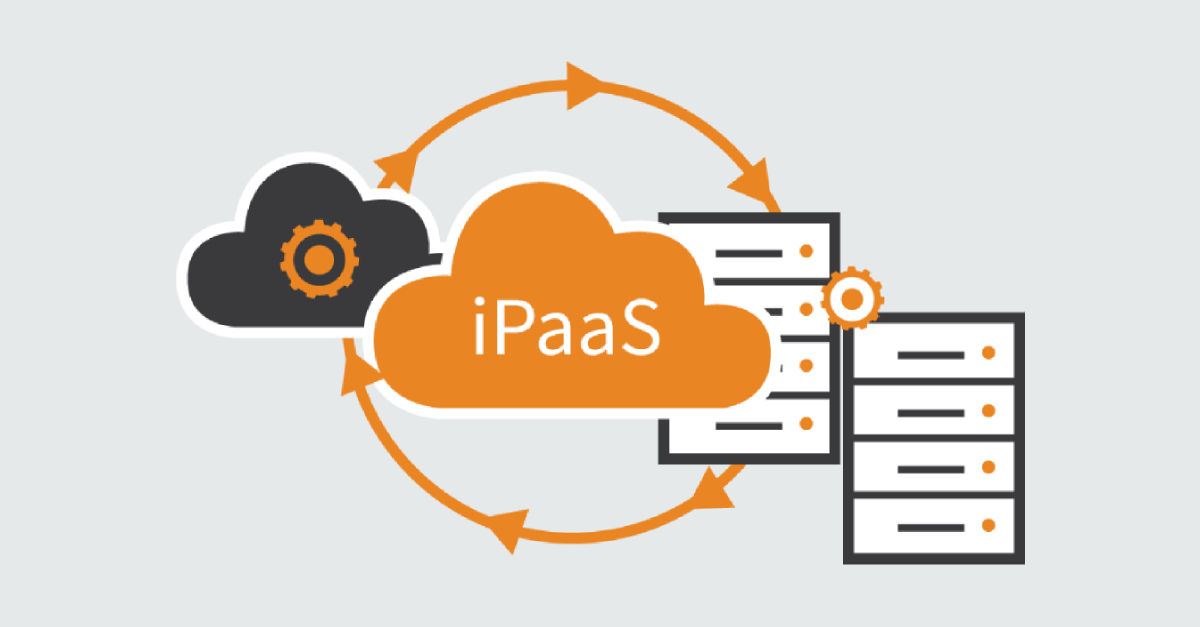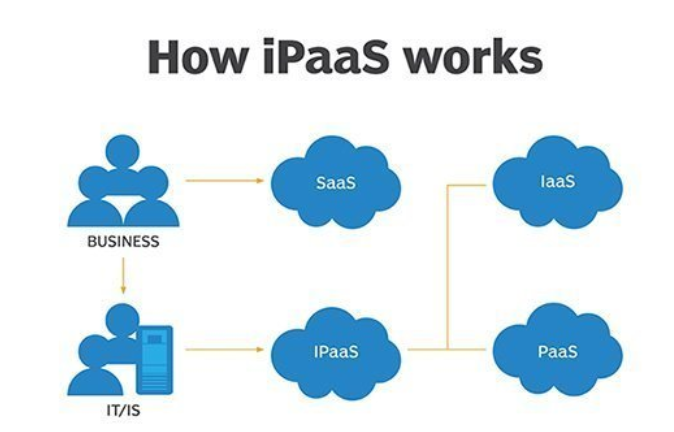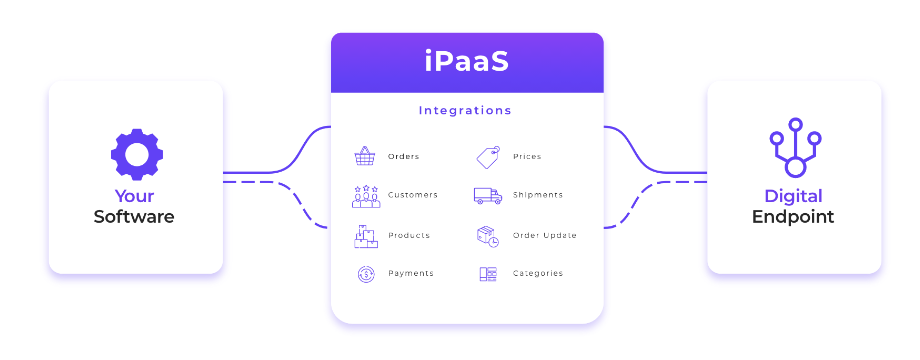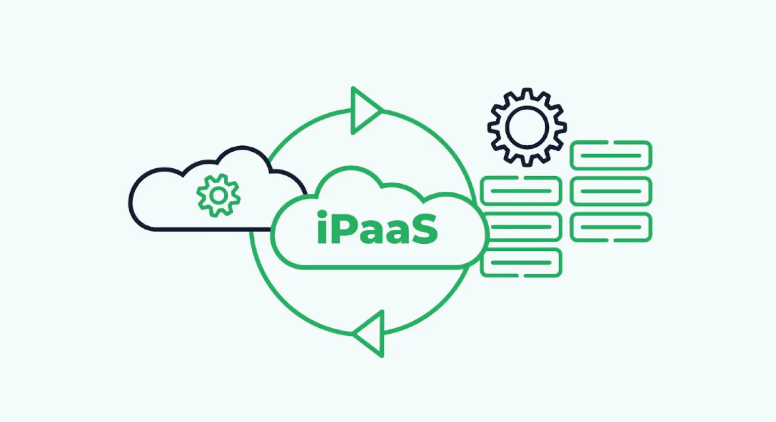What is iPaaS?
Seamless data integration has become increasingly important. Organizations deal with multiple systems, applications, and data sources, making it essential to connect and synchronize them efficiently.
Integration Platform as a Service (iPaaS) emerges as a solution to address these integration challenges. iPaaS is a cloud-based platform that facilitates the integration of various applications and data sources, enabling smooth data flow and process automation. This blog post aims to provide a comprehensive understanding of iPaaS and highlight its benefits for organizations.
Integration Platform as a Service (iPaaS) refers to a cloud-based platform that facilitates the integration of diverse applications, systems, and data sources within an organization. It acts as a middleware that connects disparate systems, allowing data to flow seamlessly and automating business processes. iPaaS offers a range of features and functionalities, including data transformation, connectivity, workflow management, and monitoring.
Unlike traditional integration approaches that require significant infrastructure and development efforts, iPaaS provides a scalable and cost-effective solution for organizations of all sizes.
Key Features and Functionalities of iPaaS
- Data connectors and pre-built integrations: iPaaS provides a vast library of connectors and pre-built integrations that enable quick and easy connectivity with various applications and systems. These connectors abstract the complexities of integration, reducing development time and effort.
- Data transformation and mapping: iPaaS allows for data transformation and mapping between different data formats, ensuring compatibility and consistency across integrated systems. It simplifies the process of translating data structures and facilitates seamless data exchange.
- Workflow creation and management: iPaaS offers a visual interface for creating and managing workflows or integration processes. Users can define the sequence of tasks, data transformations, and conditional logic within the workflow, simplifying the automation of complex business processes.
- Real-time data integration and synchronization: iPaaS supports real-time data integration, ensuring that information is updated and synchronized across connected systems in near real-time. This capability enables organizations to make timely decisions based on accurate and up-to-date data.
Benefits of iPaaS for Organizations
- Enhanced operational efficiency: iPaaS streamlines data integration processes, reducing manual effort and minimizing errors. It enables automation and real-time data synchronization, leading to improved operational efficiency and faster decision-making.
- Accelerated time-to-market: With pre-built connectors and integrations, iPaaS significantly reduces the time and effort required to connect applications and systems. This agility allows organizations to launch new products and services faster, gaining a competitive edge in the market.
- Scalability and flexibility: iPaaS is designed to scale as per the organization’s needs. It accommodates increasing data volumes, user traffic, and application integrations without requiring significant infrastructure investments. Additionally, iPaaS offers flexibility by supporting both cloud-based and on-premises integrations.
- Cost-effectiveness: iPaaS eliminates the need for extensive infrastructure and development resources, reducing upfront costs. It follows a subscription-based pricing model, allowing organizations to pay for the services they use. This cost-effectiveness makes iPaaS an attractive choice for organizations looking to optimize their integration efforts.
Need help with iPaaS implementation? Contact Us.
How Does iPaaS Work?
iPaaS operates based on a cloud-based architecture that consists of the following components:
- Integration Agents: These lightweight software components are deployed on the premises or in the cloud to facilitate connectivity with various applications and systems. Integration agents securely transmit data between the iPaaS platform and the endpoints.
- Data Connectors: iPaaS offers a wide range of pre-built connectors that establish connections with popular applications, databases, and APIs. These connectors simplify the integration process by handling the technical aspects, such as authentication and data mapping.
- Integration Flows: Integration flows represent the workflows or integration processes created within the iPaaS platform. They define the sequence of actions, data transformations, and conditional logic required to integrate and synchronize data across systems.
- Monitoring and Management: iPaaS platforms provide monitoring and management capabilities to track the performance of integration flows, identify bottlenecks or errors, and ensure the smooth functioning of the integrated systems. These features enable proactive troubleshooting and optimization of integration processes.
- Real-time data integration and synchronization are key capabilities of iPaaS. As data is updated or created in one system, iPaaS immediately propagates the changes to connected systems, ensuring data consistency across the integrated environment. iPaaS leverages event-driven architecture and messaging systems to facilitate real-time data exchange and minimize latency.
Use Cases of iPaaS
iPaaS finds applications in various scenarios, including:
- E-commerce integration and automation: iPaaS enables seamless integration between e-commerce platforms, such as online marketplaces, payment gateways, and inventory management systems. It automates order processing, inventory synchronization, and customer data management, enhancing the efficiency of e-commerce operations.
- CRM and marketing automation integration: iPaaS connects customer relationship management (CRM) systems with marketing automation platforms, ensuring the seamless flow of customer data. It enables organizations to provide personalized marketing campaigns, automate lead management, and improve customer engagement.
- Cloud application integration: iPaaS facilitates the integration of cloud-based applications, such as enterprise resource planning (ERP), customer service, and human resources systems. It enables data sharing and process automation between these applications, improving overall business productivity.
- Data migration and synchronization: iPaaS simplifies data migration by providing tools and capabilities to extract data from legacy systems, transform it, and load it into new applications or databases. It also ensures data synchronization between on-premises and cloud-based systems, maintaining data consistency across environments.
- IoT (Internet of Things) data integration: iPaaS connects IoT devices and sensors with backend systems, allowing organizations to collect, process, and analyze data from connected devices. It enables real-time monitoring, remote control, and data-driven decision-making in IoT deployments.
- Hybrid cloud integration: iPaaS supports the integration of applications and data across hybrid cloud environments, combining on-premises systems with cloud-based services. It enables organizations to leverage the benefits of both environments while ensuring seamless data flow and process automation.
Choosing the Right iPaaS Solution
When selecting an iPaaS solution, organizations should consider the following factors:
- Integration capabilities and flexibility: Evaluate the iPaaS platform’s ability to integrate with the applications and systems specific to your organization’s needs. Check the availability of pre-built connectors for the desired applications and the flexibility to create custom integrations if required.
- Scalability, security, and reliability: Assess the iPaaS platform’s scalability to handle increasing data volumes and user traffic. Ensure that it provides robust security measures, including data encryption, user authentication, and access controls. Additionally, consider the platform’s reliability and availability to ensure uninterrupted integration processes.
- Pricing models and total cost of ownership (TCO): Understand the pricing models offered by iPaaS providers, such as subscription-based plans or usage-based pricing. Evaluate the total cost of ownership, considering factors like data transfer costs, storage fees, and additional charges for premium features or support.
Conclusion
Integration Platform as a Service (iPaaS) offers a powerful solution for organizations seeking seamless data integration and process automation. By seamlessly connecting disparate systems, applications, and data sources, iPaaS streamlines operations, accelerates time-to-market and enhances scalability and flexibility.
When selecting an iPaaS solution, it is essential for organizations to carefully evaluate integration capabilities, scalability features, security measures, and pricing models offered by different providers. Making an informed decision ensures that the chosen iPaaS solution aligns with specific business needs and goals.
To harness the benefits of iPaaS and take your business to new heights of success, we encourage you to follow and partner with Ubique Digital Solutions. With our expertise in iPaaS implementation and customization, we can help you unlock the full potential of seamless data integration, enabling you to optimize operations, improve efficiency, and drive innovation. Contact us today.
FAQs
Q: What is the difference between iPaaS and ESB (Enterprise Service Bus)?
Integration Platform as a Service (iPaaS) and Enterprise Service Bus (ESB) are both integration solutions, but they have distinct characteristics. ESB is typically an on-premises middleware solution that focuses on integrating applications within an organization’s infrastructure. It relies on a hub-and-spoke architecture and supports various integration patterns.
Q: How does iPaaS handle data security and compliance?
iPaaS platforms prioritize data security and compliance by implementing robust security measures like data encryption, secure transmission protocols, and user authentication mechanisms. They often comply with industry standards and regulations such as GDPR and HIPAA to ensure data privacy. Organizations should assess the security features and compliance certifications of iPaaS providers when selecting a solution.
Q: Can iPaaS integrate with on-premises systems?
Yes, iPaaS solutions can integrate with on-premises systems. iPaaS platforms offer integration agents that can be deployed within an organization’s infrastructure to establish secure connections with on-premises applications and systems.
Q: Does iPaaS require coding or technical expertise?
iPaaS platforms are designed to be user-friendly and accessible to non-technical users. They provide visual interfaces and drag-and-drop tools for creating integration workflows, reducing the need for extensive coding.
Q: Can iPaaS handle large-scale data integration?
Yes, iPaaS platforms are built to handle large-scale data integration requirements. They offer scalability features, such as horizontal scaling and distributed architectures, to accommodate increasing data volumes and user traffic.


